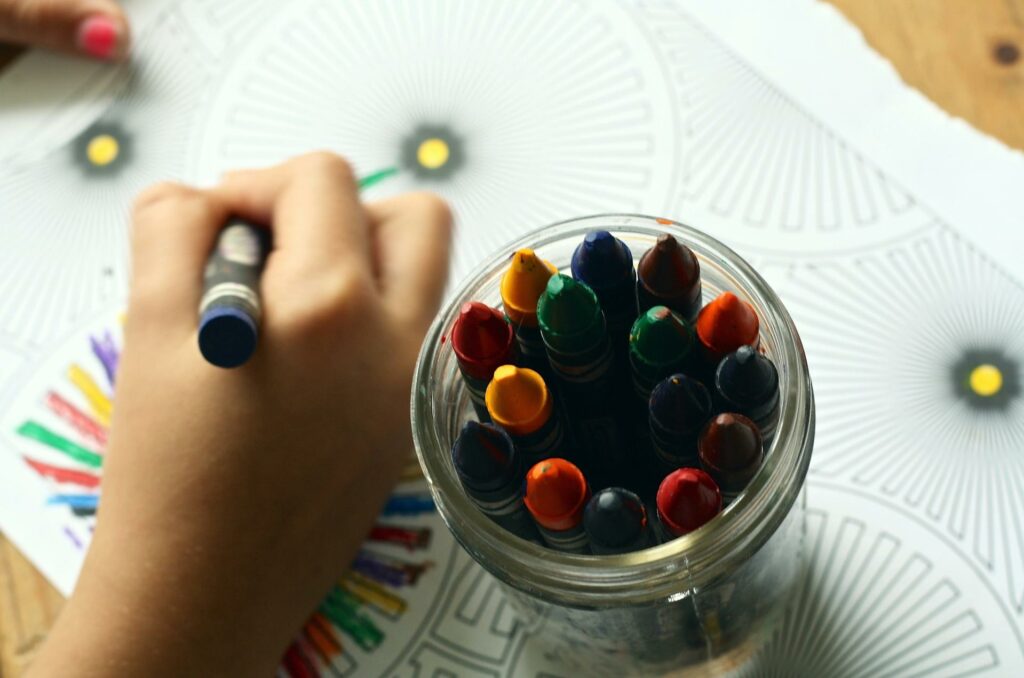Creativity and imagination are essential skills for children as they grow and develop, shaping not only their problem-solving abilities but also their emotional and social intelligence. Nurturing creativity and imagination can set the foundation for success, adaptability, and innovation in the future. Here, we explore how parents and educators can foster these skills in children and the benefits of doing so.
Why is it Important to Nurture Creativity?
Nurturing creativity is about more than just encouraging artistic expression. It involves helping children develop critical thinking, resilience, and the ability to approach challenges with an open mind. Creative children tend to be more flexible in their thinking, which enhances their ability to innovate and solve problems. Additionally, fostering creativity can improve children’s emotional well-being, enabling them to express themselves better and develop a sense of individuality.
How to Nurture Creativity at Home
1. Provide Open-Ended Activities
Offer activities that don’t have a specific goal or outcome. This can be as simple as providing art supplies without instructions or encouraging imaginative play. Let your child explore their ideas freely without judgement or direction.
2. Encourage Exploration
Creativity thrives in environments that allow exploration and discovery. Take your child to new places, introduce them to different cultures, and allow them to experiment with various mediums such as music, art, or nature-based play.
3. Foster Problem-Solving
Instead of solving problems for your child, involve them in the process. Ask questions like, “How would you fix this?” or “What do you think would happen if we tried this?” By allowing them to think through challenges, they learn to innovate and develop solutions independently.
4. Create a Safe Space for Ideas
Children need to feel that their ideas are valued. Encourage them to share their thoughts and creations, and be sure to praise effort rather than results. This builds their confidence and willingness to take creative risks.
5. Limit Screen Time
While technology has its place, too much screen time can limit imagination. Engage your child in activities that stimulate their mind, such as reading, building, or outdoor play, which are proven to promote creativity.
The Benefits of Nurturing Creativity
When children are encouraged to think creatively, they benefit in numerous ways:
- Enhanced Problem-Solving Abilities: Creative thinking helps children come up with unique solutions to problems.
- Improved Emotional Expression: Through creativity, children learn to express their feelings and thoughts in ways that go beyond words.
- Higher Self-Confidence: Engaging in creative activities helps build a sense of accomplishment, which boosts confidence.
- Better Academic Performance: Studies show that creative students tend to perform better academically because they can think outside the box.
Nurturing Creativity in the Classroom
In the classroom, nurturing creativity can be approached by offering project-based learning, encouraging collaboration, and incorporating arts into various subjects. Teachers can foster a creative environment by allowing students to explore multiple solutions to a problem and promoting discussions that open new avenues of thought.
For more tips and resources on nurturing creativity, visit our website here.
FAQ
What is nurturing creativity?
Nurturing creativity involves providing children with the tools, opportunities, and support to explore their ideas, think independently, and express themselves freely.
How to nurture creativity in the classroom?
In the classroom, teachers can encourage creativity by offering open-ended tasks, promoting problem-solving, and incorporating artistic and imaginative activities into the curriculum.
Why is it important to nurture creativity in children?
It is important because creativity enhances problem-solving skills, emotional expression, and self-confidence. It also prepares children to adapt to the ever-changing world around them.
How do you nurture and encourage children’s creativity?
By providing opportunities for open-ended exploration, supporting imaginative play, encouraging problem-solving, and creating a safe space for their ideas, we help children develop their creative potential.

